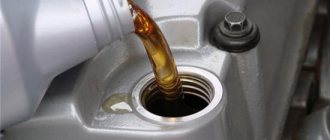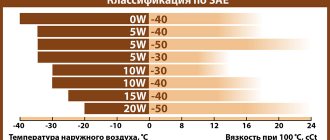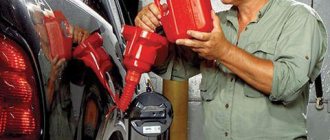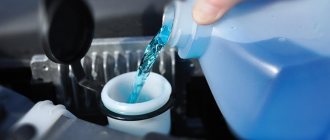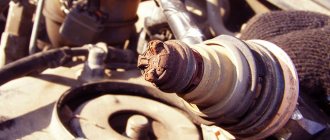Why does oil leak?
Automotive oil is one of the main components of stable and long-term operation of the power unit. The engine system includes a large number of different covers and pans to keep the lubricant inside. One such element that retains oil is the valve cover. It is installed on the cylinder head. This implies its direct purpose - timing belt sealing. It is thanks to the cover that every driver can be sure that no dust or moisture will get inside the engine.
Oil leaks can occur for many reasons. Sometimes lubricant leaks at the junction of the cylinder head and the cover, and there are cases when oil leaks at the place where the bolts are attached. In any case, if you find traces of a substance, then pay attention to the following details and elements, which often become the cause:
- Pad;
- Valve and oil cover;
- Bolts and other fasteners.
Gasket - all the reasons for oil leaks are often associated with this element. The gasket is made of rubber. This seal constantly heats up while the engine is running and cools down when the engine is turned off. It is quite natural that temperature effects on the gasket do not give it strength, but, on the contrary, form cracks in its structure. Over time, the seal loses its elasticity and ceases to fit tightly to the surface of the cover, which causes oil leaks.
But it’s not always just the gasket that fails. Today, under the hood of many modern cars you can find a plastic valve cover. It is quite easy to damage, and it can also burst during winter frosts. Bolts and any other fasteners very often become a problem area. It is enough just not to tighten the bolt - oil will ooze out. It's a good idea to check all studs and bolts as they can break if you over tighten them.
High pressure in the lubrication system
If all the above reasons are quite simple and harmless, then high pressure in the engine lubrication system is already evidence of the presence of much more serious malfunctions. In this case, you cannot do without a comprehensive and complete inspection of the car. Most motorists know that an oil pressure light on the instrument panel indicates low pressure in the system. If, on the contrary, this characteristic is too high, the driver will have no way of knowing about it. The only solution is manual measurement.
Use a liquid pressure gauge, but before you move directly to measuring pressure, find out what is considered normal for a particular engine. You can find out the pressure rating in the operating instructions. High blood pressure is a problem that needs to be addressed urgently. But before you correct the situation, you need to know the reasons why this parameter could jump sharply. The reasons may be the following:
- Incorrect operation of crankcase ventilation. In this case, accumulating gases cause an increase in this parameter. The pressure literally forces the oil out from under the valve cover.
- Clogged oil system channels also cause increased pressure.
- Using high viscosity oil and increasing its level can all cause the lubricant to leak out from under the cap.
Once the cause has been discovered, you can move on to the stage of effectively eliminating it.
Useful tips and tricks
- It should be remembered that high-quality elimination of oil leaks from under the valve cover requires the correct choice of gasket under the valve cover. To do this, it is optimal to purchase original products or high-quality recommended analogues from well-known manufacturers.
- Before purchasing, the gasket should be carefully inspected, checked for elasticity, and made sure there are no sagging or other defects. The element should not be hard or overdried; even the smallest cracks are not allowed.
- For vehicles that use sealant on the valve cover, only recommended or proven sealant compounds should be used.
In this case, it is imperative to strictly follow the application technology. It should also be noted that applying an additional layer of sealant to the rubber gasket is a common practice, and there are a large number of both supporters and opponents of this method. - If the mating surfaces of the valve cover and/or cylinder head do not have a smooth surface and are uneven, then many auto mechanics additionally apply a thin layer of sealant while installing a new gasket. In this situation, the sealant allows for a better sealing of the joint, but the overall life of the gasket and the seal is usually short. If there are no defects on the adjacent surfaces, then it is better not to use sealant for preventive purposes.
- When installing and tightening the valve cover bolts, you must follow the vehicle manufacturer's recommendations and tighten the valve cover bolts in the correct sequence and only to the recommended torque.
How to fix a leak from under the valve cover?
If the whole problem is due to the gasket, then it is enough to replace it with a new one. It is best to choose a high-quality original-made seal from time-tested manufacturers. The gasket must be elastic, without various defects and damage. The valve cover and oil cover also need to be replaced. But here car owners often have difficulty making a choice. When replacing the valve cover, pay attention to metal counterparts. They are more expensive than plastic covers, but much more practical and reliable.
In the case of high blood pressure, it will be more difficult to eliminate this problem. Clearing clogged ducts often helps. But there are also more severe cases that require a comprehensive, professional approach. When installing a new valve cover, be sure to follow the manufacturer's recommended sequence and torque. If replacing all the elements did not help, and cleaning the crankcase ventilation also did not help, then pay attention to the pressure reducing valve. This valve most often fails due to excessive contamination. It is enough to clean it or, in extreme cases, replace it.
Why does oil leak?
Automotive oil is one of the main components of stable and long-term operation of the power unit. The engine system includes a large number of different covers and pans to keep the lubricant inside. One such element that retains oil is the valve cover. It is installed on the cylinder head. This implies its direct purpose - timing belt sealing. It is thanks to the cover that every driver can be sure that no dust or moisture will get inside the engine.
Oil leaks can occur for many reasons. Sometimes lubricant leaks at the junction of the cylinder head and the cover, and there are cases when oil leaks at the place where the bolts are attached. In any case, if you find traces of a substance, then pay attention to the following details and elements, which often become the cause:
- Pad;
- Valve and oil cover;
- Bolts and other fasteners.
Gasket - all the reasons for oil leaks are often associated with this element. The gasket is made of rubber. This seal constantly heats up while the engine is running and cools down when the engine is turned off. It is quite natural that temperature effects on the gasket do not give it strength, but, on the contrary, form cracks in its structure. Over time, the seal loses its elasticity and ceases to fit tightly to the surface of the cover, which causes oil leaks.
Do I need to lubricate the rubber gasket with sealant?
Auto mechanics have different opinions about the use of sealant. Some consider its use unacceptable, while others, on the contrary, argue that only with it can complete tightness be achieved. Let's just say that if the surfaces of the cover and cylinder block are rough, the use of sealant is desirable, but only if it is applied in a neat, thin layer. If the surfaces are perfectly flat, you can do without it, because a few years ago no one really used such a sealant. Well, for cars where the gasket is not provided for by the design, sealant is indispensable.
High pressure in the lubrication system
If all the above reasons are quite simple and harmless, then high pressure in the engine lubrication system is already evidence of the presence of much more serious malfunctions. In this case, you cannot do without a comprehensive and complete inspection of the car. Most motorists know that an oil pressure light on the instrument panel indicates low pressure in the system. If, on the contrary, this characteristic is too high, the driver will have no way of knowing about it. The only solution is manual measurement.
Use a liquid pressure gauge, but before you move directly to measuring pressure, find out what is considered normal for a particular engine. You can find out the pressure rating in the operating instructions. High blood pressure is a problem that needs to be addressed urgently. But before you correct the situation, you need to know the reasons why this parameter could jump sharply. The reasons may be the following:
- Incorrect operation of crankcase ventilation. In this case, accumulating gases cause an increase in this parameter. The pressure literally forces the oil out from under the valve cover.
- Clogged oil system channels also cause increased pressure.
- Using high viscosity oil and increasing its level can all cause the lubricant to leak out from under the cap.
Once the cause has been discovered, you can move on to the stage of effectively eliminating it.
Oil sensor
If such a malfunction is detected, the clear and only correct solution will be to immediately replace the part. The fact is that the occurrence of a leak from this device is usually associated with a violation of the integrity of its rubber diaphragm. A cracked sensor element can burst at any time, then the pump pressure will drive all the oil out of the engine in a couple of minutes. Note that most of these devices, produced by the same manufacturer, are most often completely interchangeable and may differ slightly only in the design of the connector.
How to fix a leak from under the valve cover?
If the whole problem is due to the gasket, then it is enough to replace it with a new one. It is best to choose a high-quality original-made seal from time-tested manufacturers. The gasket must be elastic, without various defects and damage. The valve cover and oil cover also need to be replaced. But here car owners often have difficulty making a choice. When replacing the valve cover, pay attention to metal counterparts. They are more expensive than plastic covers, but much more practical and reliable.
In the case of high blood pressure, it will be more difficult to eliminate this problem. Clearing clogged ducts often helps. But there are also more severe cases that require a comprehensive, professional approach. When installing a new valve cover, be sure to follow the manufacturer's recommended sequence and torque. If replacing all the elements did not help, and cleaning the crankcase ventilation also did not help, then pay attention to the pressure reducing valve. This valve most often fails due to excessive contamination. It is enough to clean it or, in extreme cases, replace it.
The most severe case is a problem with the piston group. If all the above measures did not help and the oil continues to leak, then there is nothing left but to repair the engine. The fact that there is a malfunction of the piston group is usually indicated not only by an oil leak, but also by a number of other symptoms: multiple oil flows at the junction points of the engine components, a sharp decrease in vehicle power, and unstable operation of the power unit at idle. With all these ailments, it may well be that the piston rings require replacement.
Where is it flowing from?
This is the question we ask ourselves when we see oil stains under our car. If the pan and the block are dry, then the problem is in the cuffs, but which ones exactly? The fact is that the leak can be in both the engine and the gearbox, where the input shaft or fluid coupling oil seal is located (on an automatic transmission). How can we determine the source of the leak? You need to place a particle of dripping liquid into water. The engine part will remain in the form of a drop, and the transmission part from the gearbox will scatter across the surface. Now we will know exactly where it is coming from and will be able to take the necessary actions.
Source

